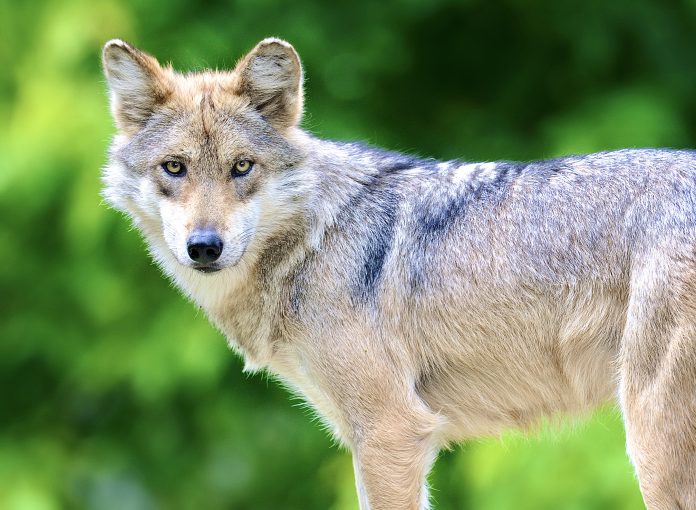For the first time since their reintroduction into the wild, the Mexican wolf population in Arizona and New Mexico has surpassed 200, with a minimum of 241 wild wolves documented in 2022.
“This milestone has been 25 years in the making,” Brady McGee, U.S. Fish and Wildlife Service Mexican Wolf Recovery Coordinator, said in a statement. “To go from zero wild Mexican wolves at the start to 241 today is truly remarkable. In 2022, we recorded more packs, more breeding pairs, and a growing occupied range, proving we are on the path to recovery. These achievements are a testament to partner-driven conservation in the West.”
The 2022 population estimate represents a 23% increase from the minimum of 196 wolves in 2021. This marks the seventh consecutive year of population growth and a more than doubling in size since 2017. The population is distributed with 136 wolves in New Mexico and 105 in Arizona.
“The road to recovery for any endangered species is neither straight or easy, and this has proven to be the case for the Mexican wolf,” stated Jim deVos, Arizona Game and Fish Department Mexican Wolf Coordinator. “With the stunning growth that occurred in 2022, recovery has accelerated at an amazing rate. By every possible measure, progress was made, including 31 breeding pairs producing 121 pups, of which 81 were documented having survived to the time of the count, which is a very high survival rate of 67%. While the road to recovery still has ground to be covered, in 2022, the recovery program covered a lot of ground.”
Mexican wolf population information is gathered from November through February by the Interagency Field Team (IFT). During this time, the IFT conducts ground and aerial surveys, using a variety of methods, including remote cameras, scat collection, and visual observation. Counting the population at the end of each year allows for comparable year-to-year trends at a time of year when the Mexican wolf population is most stable.
Among the 2022 findings:
-
A minimum of 59 packs were documented at the end of 2022: 40 in New Mexico and 19 in Arizona. A wolf pack is defined as two or more wolves that maintain an established home range.
-
A minimum of 121 pups were born in 2022, with at least 81 surviving until the end of the year, marking a 67% survival rate. The average survival of Mexican wolf pups in their first year is around 50%.
-
A minimum of 31 breeding pairs, 20 in New Mexico and 11 in Arizona, were recorded in 2022. A breeding pair is defined as a pack that consists of an adult male and female and at least one pup a year surviving through December 31.
-
There were 109 collared wolves in the wild at the end of the year, which is 45% of the wild population.



